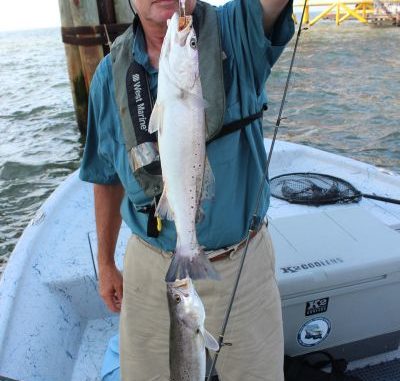
Vitter wants more artificial reef sites, less red tape.
Sen. David Vitter has filed legislation that, if passed by Congress, would ease the way for oil and gas exploration companies to leave their structures in the Gulf of Mexico to serve as fish habitat, the Coastal Conservation Association reported May 29. “A number of bureaucratic obstacles have been created that make it even more difficult for energy companies to elect to keep those structures in the Gulf for habitat purposes rather than removing them for scrap,” CCA President Pat Murray said. “We are grateful for Sen. Vitter for targeting the red tape that has been causing some of these valuable platforms to be removed unnecessarily. As anglers, we share his goal of leaving as much of that structure in the Gulf as possible.”
The federal policy known as “Idle Iron” has been on the books for years, but the Bureau of Safety and Environmental Enforcement has been more diligent since Hurricane Katrina. Anglers discovered in early May that the Pickets in Ship Shoal 26, a popular trout-fishing location for anglers out of Dularge and Cocodrie, was being removed.
Click here to read about an agreement that has at least postponed the work to tear up the Pickets.
The CCA admitted that, due to extraordinary liability issues, it is virtually impossible to leave the platforms standing upright indefinitely. However, the organization pointed out that options do exist for coastal states to assume liability for structures that are cut and placed in designated artificial reefing areas.
Sen. Vitter’s bill (S.1079) contains important steps to expedite the application process for new structures to be approved for state-run Rigs to Reefs programs.
“In our extensive dealings in this issue, one of the hurdles often cited by industry is the exorbitant length of time it takes to get a ruling on whether a specific rig can be a candidate for a rigs to reef program,” said Murray. “This bill requires a decision not more than 150 days after the application is submitted. That is a key provision because the pace of removals is poised to increase markedly over the next two years, and an expedited process will allow far more structures to be reefed rather than removed.”
When weighing the economic benefits of reefing, proximity to reefing sites is a critical component as towing costs are prohibitive. S.1079 would require creation of 20 new artificial reef planning sites in federal waters adjacent to Gulf states – six off both Texas and Louisiana, three each off Mississippi and Alabama, and five off Florida.
At least 10 of those sites would have to be located in waters between 100 and 200 feet, with the remainder located in depths not greater than 200 feet.
Additionally, current regulations also require a distance of at least five miles between reefed structures; S.1079 would reduce that distance to two miles.
“The more reefing sites in the Gulf, the more likely it is that the reefing option will make economic sense as well as environmental sense,” said Murray. “Sen. Vitter’s bill creates significantly more opportunity to save these structures.”


